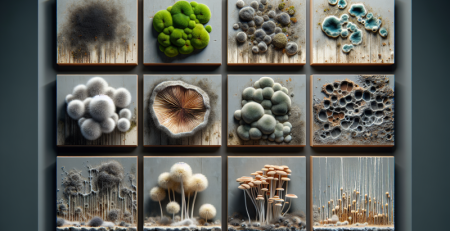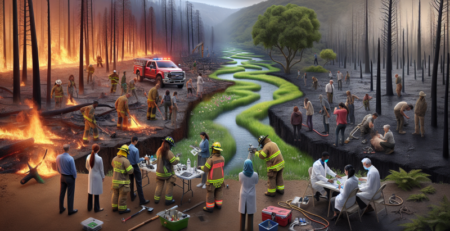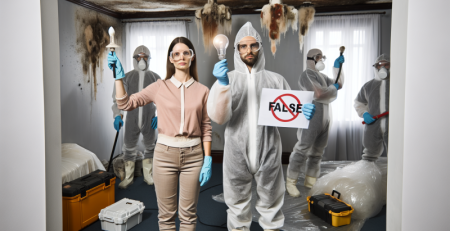Understanding the Types of Water Damage
Water damage can be a homeowner’s worst nightmare, leading to costly repairs and potential health risks. Understanding the types of water damage is crucial for effective prevention and remediation. From minor leaks to catastrophic floods, each type of water damage presents unique challenges that require prompt attention. At Kraus Restoration, NJ’s leaders in water, mold, and fire damage restoration, we specialize in identifying and addressing these issues. Our IICRC certified experts are available 24/7 to provide rapid response services throughout Central and Northern NJ. Whether you’re dealing with clean water, gray water, or black water damage, knowing the distinctions can help you take the right steps to protect your property. For immediate assistance, call us at (973) 886-2021 and let us help you restore your peace of mind.
Introduction to Water Damage
Water damage is a significant concern for homeowners and businesses alike, as it can lead to extensive property damage and health risks. Understanding the types of water damage is crucial for effective prevention and remediation. Water damage is typically categorized into three main types: clean water, gray water, and black water.
-
Clean Water: This type originates from a clean source, such as a broken pipe or a leaking faucet. While it poses minimal health risks, it can still cause structural damage if not addressed promptly.
-
Gray Water: This water contains some contaminants and comes from sources like washing machines or dishwashers. It can cause discomfort and potential health issues if ingested.
-
Black Water: This is the most hazardous type, containing harmful bacteria and toxins, often resulting from sewage backups or floodwaters. Immediate professional intervention is essential to mitigate health risks and property damage.
According to the Institute of Inspection, Cleaning and Restoration Certification (IICRC), “Water damage can lead to mold growth within 24 to 48 hours if not properly addressed.” This highlights the urgency of addressing water damage promptly. For more information on how to handle water damage, visit our water cleanup services or learn about our mold cleanup services. For any inquiries, feel free to contact us.
Categories of Water Damage
Water damage can be categorized into several distinct types, each with unique causes and implications for property owners. Understanding these categories is crucial for effective remediation and prevention.
The first category is clean water damage, which typically arises from sources like broken pipes, overflowing sinks, or rainwater. This type of damage is generally less hazardous, as the water is free from contaminants. However, if not addressed promptly, it can lead to secondary issues such as mold growth.
The second category is gray water damage, which comes from sources that may contain some level of contaminants, such as washing machine overflows or toilet spills (without feces). While gray water is not immediately dangerous, it can pose health risks if left untreated.
The most severe category is black water damage, which includes water from sewage backups, floodwaters, or other sources that contain harmful pathogens and toxins. This type of damage requires immediate professional intervention to ensure safety and proper cleanup.
For more information on how to handle water damage effectively, you can explore our water cleanup services or learn about our mold cleanup services. If you have any questions, feel free to contact us for assistance.
Common Causes of Water Damage
Water damage can stem from various sources, each presenting unique challenges for homeowners and property managers. One of the most common causes is plumbing issues, such as burst pipes or leaking fixtures, which can lead to significant water accumulation in a short period. Additionally, heavy rainfall or flooding can overwhelm drainage systems, causing water to seep into basements and crawl spaces. Poorly maintained roofs and gutters can also contribute to water damage, as they may allow rainwater to infiltrate the structure.
Another frequent cause is appliance malfunctions, particularly from washing machines, dishwashers, and water heaters. These appliances can leak or overflow, resulting in extensive damage if not addressed promptly. Furthermore, natural disasters like hurricanes and storms can lead to severe flooding, necessitating immediate water cleanup efforts to mitigate the impact.
Lastly, human error, such as leaving a faucet running or failing to turn off a hose, can also lead to unexpected water damage. Understanding these common causes is crucial for prevention and timely intervention. For more information on how to protect your property from water damage, visit our about page or explore our services for effective solutions.
Signs and Symptoms of Water Damage
Water damage can manifest in various ways, and recognizing the signs early is crucial for effective remediation. One of the most common indicators is the presence of water stains on walls or ceilings. These stains often appear as yellowish or brownish patches and can indicate leaks from plumbing or roofing issues. Additionally, if you notice peeling paint or wallpaper, it may be a sign that moisture is trapped beneath the surface, leading to potential structural damage.
Another significant symptom is the presence of mold and mildew, which thrive in damp environments. If you detect a musty odor or see visible mold growth, it’s essential to address the underlying water issue promptly. Warped or buckled flooring can also signal water damage, as wood and laminate materials can swell and distort when exposed to excess moisture.
In some cases, you may experience increased humidity levels in your home, which can lead to discomfort and health issues. If you suspect water damage, it’s advisable to consult professionals who specialize in water cleanup and mold cleanup. Timely intervention can prevent further damage and protect your property. For more information on our services, feel free to contact us.
Types of Water Damage by Source
Understanding the various types of water damage is crucial for effective prevention and remediation. Water damage can originate from several sources, each presenting unique challenges and requiring specific responses. The most common sources include natural disasters, plumbing failures, and appliance malfunctions.
Natural disasters, such as floods and heavy rainfall, can lead to significant water intrusion, overwhelming drainage systems and causing extensive damage to homes and businesses. On the other hand, plumbing failures, including burst pipes and leaks, can occur unexpectedly, often resulting in hidden damage that may go unnoticed until it becomes severe. Additionally, malfunctioning appliances, like washing machines and water heaters, can cause localized flooding, leading to immediate concerns for property owners.
Understanding these sources is essential for effective water cleanup and restoration efforts. Each type of water damage may also carry different health risks, particularly when it involves contaminated water. For instance, water damage from sewage backups requires specialized handling to ensure safety and compliance with health regulations.
To mitigate the impact of water damage, it is vital to act quickly and seek professional help. For more information on how to protect your property and respond to water damage, visit our about page or explore our services.
The Impact of Water Damage on Property
Water damage can have a profound and lasting impact on property, affecting both its structural integrity and aesthetic appeal. When water infiltrates a building, it can lead to a range of issues, including mold growth, wood rot, and compromised electrical systems. The severity of the damage often depends on the type of water involved—clean, gray, or black water. Clean water, while less harmful, can still cause significant damage if not addressed promptly. Gray water, which may contain contaminants, poses additional health risks and requires careful handling. Black water, often resulting from sewage or flooding, is the most dangerous and necessitates immediate professional intervention.
The financial implications of water damage can be staggering. Property owners may face costly repairs, increased insurance premiums, and potential loss of rental income. Moreover, the presence of mold can lead to health issues for occupants, further complicating the situation. To mitigate these risks, it is crucial to act quickly and seek professional help. Restoration services can effectively address water damage, ensuring that properties are restored to their original condition. For more information on how to handle water damage, visit our water cleanup services or learn about our mold cleanup solutions. If you have questions, feel free to contact us for assistance.
Prevention and Mitigation Strategies
Water damage can lead to significant structural issues and health risks if not addressed promptly. Understanding the types of water damage is crucial for implementing effective prevention and mitigation strategies. There are three primary categories of water damage: clean water, gray water, and black water. Clean water originates from sources like broken pipes or rainwater, while gray water comes from appliances like dishwashers and washing machines. Black water, the most hazardous, contains harmful contaminants from sewage or floodwaters.
To prevent water damage, regular maintenance of plumbing systems is essential. Homeowners should inspect pipes for leaks, ensure proper drainage around the property, and clean gutters to prevent water accumulation. Installing sump pumps and backflow valves can also help mitigate risks, especially in flood-prone areas.
In the event of water damage, immediate action is vital. Engaging professional services for water cleanup can minimize damage and restore your property efficiently. Additionally, addressing mold growth promptly is crucial, as it can develop within 24-48 hours after water exposure. For comprehensive solutions, consider consulting with experts in mold cleanup and restoration. By understanding the types of water damage and implementing these strategies, property owners can protect their homes and ensure a safe living environment.
In conclusion, understanding the various types of water damage is crucial for homeowners and property managers alike. By recognizing the distinctions between categories such as clean water, gray water, and black water, you can better assess the severity of the situation and take appropriate action. Early detection and response are key to minimizing damage and preventing long-term issues such as mold growth and structural deterioration. Whether it’s a minor leak or a major flood, being informed empowers you to make sound decisions regarding repairs and restoration. Remember, when in doubt, consulting with a professional can provide the expertise needed to navigate the complexities of water damage. Stay proactive, stay informed, and protect your property from the hidden dangers of water damage.









